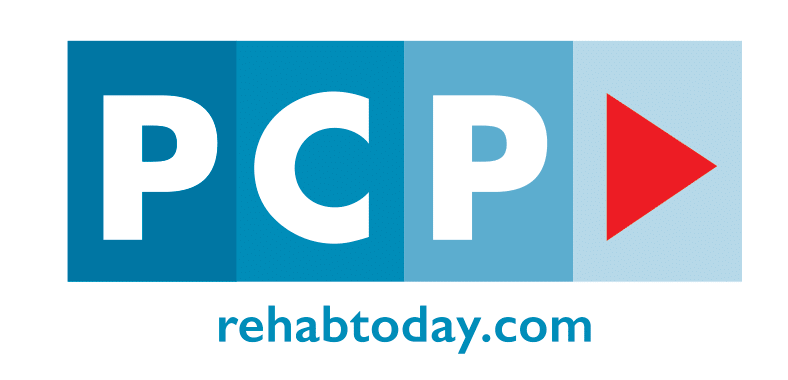Paracetamol addiction may not be widely discussed, yet it’s a critical issue for those affected. This guide helps you recognize the signs of addiction, understand the health implications, and outlines actionable steps to overcome dependence on paracetamol. Expect insights into the nuances of physical versus psychological addiction and the vital importance of support during your recovery journey.
Key Takeaways
Paracetamol addiction, primarily psychological rather than physical, arises from chronic pain management and can impact the central nervous system by altering neurotransmitters and brain function.
Symptoms of paracetamol addiction include mood swings, increased tolerance requiring higher doses, and withdrawal symptoms such as drowsiness, agitation, and tremors, signaling the body’s reliance on the substance.
Health risks of paracetamol addiction encompass liver and kidney damage, low blood sugar levels, and medication-overuse headaches, with psychological and medical treatments available to aid recovery, including the person-centered approach by Dr. Olalekan Otulana.
The Nature of Paracetamol Addiction

Paracetamol addiction is a complex issue involving both physical and psychological dimensions. The condition often arises from chronic pain management and can significantly impact an individual’s central nervous system.
We will examine the complexities of paracetamol addiction by:
Investigating chronic pain and paracetamol use
Distinguishing physical dependence from psychological addiction
Analysing the role of the central nervous system in this addiction.
Chronic pain and paracetamol use
Paracetamol is widely regarded for its effectiveness in treating both acute and chronic pain, including:
- Headaches
- Toothaches
- Muscle aches
- Menstrual cramps
- Arthritis pain
- Back pain
- Cancer pain In some cases, prescription painkillers may be recommended for more severe pain.
Paracetamol, a common household name in pain relief, operates by inhibiting the production of prostaglandins, which are crucial players in transmitting pain signals and inflammation in the body. This key function makes paracetamol a go-to for many dealing with discomfort.
The recommended dosage for adults is generally between 500 to 1000 mg per dose, with a maximum daily dose of 3 to 4 grams. This guideline is crucial to follow to avoid potential health risks. However, it’s important to note that prolonged use can alter neurotransmitters in the brain, leading to drug dependence. This change in brain chemistry is not to be taken lightly, as it can have significant impacts on an individual’s overall health and well-being.
Physical dependence vs. psychological addiction
Physical dependence is characterized by the body’s increased tolerance to a drug’s effects, leading to the need for higher doses for the same impact. In contrast, psychological dependence involves a compelling desire to continue drug consumption, even when faced with adverse consequences from other drugs.
While paracetamol generally does not lead to physical dependence, there are cases where individuals form a psychological dependency on it, underlining the unique nature of psychological addiction separate from physical dependence.
The role of the central nervous system
The central nervous system significantly contributes to paracetamol addiction. Although the exact mechanism remains unclear, there is evidence of paracetamol’s direct impact on the central nervous system and significant alterations in neurotransmission.
Prolonged use can affect the brain connectome, potentially influencing learning, memory, and neurotransmission in the associated brain structures.
Recognising Paracetamol Addiction Symptoms
Recognising the symptoms of paracetamol addiction can facilitate early intervention and increase the chances of successful recovery. Symptoms include mood swings and emotional changes, increased tolerance to the drug, and withdrawal symptoms when trying to stop its use.
We will further examine these symptoms for a comprehensive understanding.
Mood swings and emotional changes
Paracetamol addiction can profoundly affect emotional well-being, leading to mood swings and significant impact on a person’s emotional stability. There is a noteworthy connection between individuals with poor sleep patterns and self-medicating with analgesics like paracetamol.
Additionally, drug addiction can lead to significant alterations in physical appearance, including symptoms like dilated or constricted pupils and weight fluctuations.
Increased tolerance to paracetamol
The body can develop tolerance to paracetamol due to regular consumption over a prolonged period, leading to the need for higher doses to achieve the same effect. This heightened tolerance may present as the requirement for escalated doses to attain equivalent pain relief, coupled with potential signs of addiction such as impaired judgment, confusion, and dizziness.
This can result in increased risks of upper gastrointestinal bleeding, kidney and liver complications, and paracetamol hepatotoxicity, especially in cases of paracetamol overdose.
Withdrawal symptoms
When individuals addicted to paracetamol attempt to stop its use, they may experience withdrawal symptoms. These symptoms are a result of the body’s physiological response to the absence of the substance it has developed a dependence on. Typical withdrawal symptoms may include:
drowsiness
fatigue
rashes or itching
low blood sugar
tremors
agitation
anxiety
insomnia
sweating
muscle aches
irritability
Some individuals may also experience flu like symptoms, such as sweating, vomiting, and muscle aches, as part of the withdrawal process.
Health Risks Associated with Paracetamol Addiction

Paracetamol addiction carries significant health risks, including liver and kidney damage, low blood sugar, and medication-overuse headaches.
We will closely examine these medications and associated health risks, including blood pressure.
Liver and kidney damage
Excessive use of paracetamol can damage the liver due to the drug’s metabolism process in the liver, and high doses can exceed the body’s ability to process it safely. This can lead to hepatotoxicity and acute kidney injury. The initial indications of potential liver and kidney impairment can include:
Nausea
Vomiting
Diaphoresis (excessive sweating)
Lethargy
If you experience any of these symptoms after taking paracetamol, it is important to seek medical attention immediately.
Low blood sugar
Excessive use of paracetamol can impact blood sugar levels by disrupting glucose metabolism, potentially leading to hypoglycemia. To manage low blood sugar levels effectively, individuals with paracetamol addiction need to:
Regularly monitor their blood sugar
Maintain a balanced diet
Avoid skipping meals
Consume carbohydrates when experiencing low blood sugar.
Medication-overuse headaches
Prolonged use of paracetamol can lead to medication-overuse headaches, which are a type of headache resulting from the habitual, prolonged usage of headache medication. Indications of medication-overuse headaches may include frequent headaches that exacerbate with continued medication usage and a sense of reliance on painkillers for alleviation.
Interactions with Other Substances
Paracetamol is often taken alongside other medications, but it’s important to be aware of the potential for dangerous interactions.
Combining paracetamol with other drugs, such as prescription painkillers, anti-inflammatory drugs, or even certain over-the-counter medications, can significantly increase the risk of adverse effects. These interactions may lead to liver and kidney damage, cardiovascular events, and other serious health issues. For example, taking paracetamol with anti-inflammatory drugs can heighten the risk of kidney damage and gastrointestinal problems, while mixing it with other painkillers can increase the likelihood of overdose.
Additionally, some drug combinations can cause mood swings, blurred vision, and other central nervous system effects. To minimise these risks, always inform your healthcare provider about all the medications you are taking, including over-the-counter and herbal remedies. This proactive approach can help prevent dangerous drug interactions and protect your overall health.
Overcoming Paracetamol Addiction: Treatment Options

Overcoming paracetamol addiction can be a challenging journey, but with the right support and treatment options, it is possible. Treatment options generally encompass inpatient and outpatient programs, therapy and counseling, and support groups.
We will further investigate each of these treatment options for a comprehensive understanding.
Inpatient and outpatient treatment options
Inpatient and outpatient treatment programmes are two main types of treatment options that are customized to meet the specific needs of an individual and the extent of their addiction. While inpatient treatment provides continuous care and supervision in a structured environment, outpatient treatment offers greater flexibility and allows patients to continue their daily activities.
Therapy and counseling
Therapy and counseling are essential components of both inpatient and outpatient addiction services, addressing the underlying psychological aspects of addiction. Cognitive-behavioral therapy (CBT) is a key component of addiction recovery, aiding individuals in recognizing and confronting negative thought patterns and beliefs, and encouraging the development of healthier coping strategies.
PCP - Get help with your addiction to alcohol drugs gaming gambling codependency
Support groups and resources
Support groups provide a platform for sharing experiences and offer emotional support, playing a vital role in the recovery and ongoing sobriety for individuals overcoming paracetamol addiction. Some of the recommended support groups include services provided by the NHS, sober living houses, and recovery support groups like Narcotics Anonymous.
Dr. Olalekan Otulana's Expertise in Paracetamol Addiction Recovery
Dr. Olalekan Otulana, a seasoned Physician specialising in Substance Misuse Management, has extensive expertise in the treatment of paracetamol addiction. His approach to treatment is person-centred, focusing on the individual’s strengths and personal identity and encouraging active participation in their recovery process.
We will further examine Dr. Otulana’s professional background, treatment, ongoing research approach, and the testimonials received from his patients
Dr. Otulana's background and qualifications
Dr. Olalekan Otulana’s qualifications include:
Doctor of Medicine (M.D.) degree from Cambridge University Judge Business School
Specialist Physician in Substance Misuse Management with a background in General Practice and experience in local drug service, including private drug treatment options
Advanced Addiction Practitioner Membership of Addiction Professionals
Certificate in Clinical Psychopharmacology (Part 1) of the British Association for Psychopharmacology
Person-centred approach to treatment
Dr. Otulana’s person-centred approach to treatment prioritises the individual’s needs, strengths, and personal identity. It emphasises the individual’s active role in their recovery process and complements evidence-based treatments. This approach tailors the treatment plan to the individual’s specific experiences, values, and objectives, promoting empowerment and nurturing a therapeutic connection based on trust, empathy, and unconditional positive regard.
Patient feedback and success stories
Patients have expressed positive responses and gratitude for the support they received during their recovery from addiction, highlighting the efficacy of Dr. Otulana’s treatment methods. Success stories include a patient who overcame a ten-year struggle with addiction and another who reclaimed a productive, drug-free lifestyle.
Preventing Paracetamol Addiction Relapse
Preventing relapse is a critical aspect of paracetamol addiction recovery. This involves identifying and managing personal triggers, exploring alternative pain management techniques, and building a robust support network.
We will further investigate each of these elements for a comprehensive understanding.
Identifying and avoiding triggers
Understanding and managing personal triggers can significantly help in preventing relapse. Typical factors that can lead to prescription painkiller addiction include prolonged and frequent use of painkillers, which can result in serious painkiller addiction and medication overuse headaches.
Cognitive behavioral therapy can assist in unlearning maladaptive behaviors and acquiring better coping skills.
Alternative pain management techniques
Exploring alternative pain management techniques is essential to prevent a relapse in paracetamol addiction. These techniques can include:
Physical therapies
Psychological therapies
Mind-body techniques
Community support groups
Physical therapy supports individuals in improving their quality of life and managing musculoskeletal disorders, while cognitive behavioral therapy enhances the quality of life and alleviates pain.
Building a support network
The establishment of a strong support network is of paramount importance for maintaining recovery from paracetamol addiction. This network can offer essential encouragement, understanding, and resources needed to overcome obstacles and avoid relapse. Support groups provide a peer-oriented social model, offer a wide range of services, and utilize the 12 steps of addiction recovery.
Summary
In conclusion, paracetamol addiction is a complex issue involving both physical and psychological dimensions. Recognizing the symptoms and understanding the associated health risks are crucial for early intervention. Treatment options such as inpatient and outpatient programs, therapy, and counseling, coupled with support groups, can significantly aid in recovery. Furthermore, experts like Dr. Olalekan Otulana play a pivotal role in helping individuals overcome this addiction. Staying vigilant of personal triggers, exploring alternative pain management techniques, and building a robust support network can help prevent relapse and maintain long-term recovery.
Frequently Asked Questions
Is paracetamol a drug abuse?
Like any medication, taking too much paracetamol can be dangerous and may lead to misuse and overdose, but it does not produce tolerance or dependence. It is important to use this drug responsibly and avoid mixing it with other drugs or alcohol, especially for heavy drinkers.
What are the long term effects of paracetamol?
Long-term use of paracetamol can lead to increased risk of cardiovascular events, high blood pressure, and potential heart attack or stroke, as well as unpleasant symptoms such as tiredness, breathlessness, and cyanosis in extremities and lips. It’s important to be mindful of the potential long-term effects when using this medication.
Does paracetamol build up in your system?
Yes, paracetamol can build up in your system when taken regularly, leading to more effective pain relief. It works even better when combined with other simple painkillers like ibuprofen and codeine.
Why you shouldn't take paracetamol all the time?
Taking paracetamol at higher than recommended doses can lead to liver failure, as it is metabolized in the liver to a toxic byproduct. This can ultimately cause liver and kidney failure, making it important to follow the recommended dosage.
Do Paracetamols help you sleep?
Yes, Paracetamol can help with sleep due to its side effect of exhaustion and fatigue, often leading to improved sleep. The acetaminophen or antihistamine in the product can also aid in sleep.
Author
-
Dr Otulana is PCP’s longest-serving doctor. He is an experienced Physician with Specialist Interest in Substance Misuse Management and he has a wide range of experience in the assessment and management (including detoxification) of clients with various drug and substance addiction problems. Dr Otulana started practising as a doctor in 2000 and with over 10 years as an Addiction Physician. He is an Advanced Addiction Practitioner Member of Addiction Professionals and also holds the Certificate in Clinical Psychopharmacology (Part 1) of the British Association for Psychopharmacology. He is additionally a strong healthcare services professional with a Master of Business Administration (M.B.A.) degree from Cambridge University Judge Business School.
View all posts








